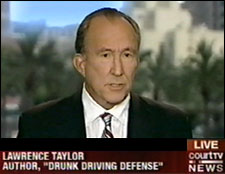Virginia May Soon Allow Drunk Driving on Private Property
Posted by Jon Ibanez on February 22nd, 2018A Virginia bill, if passed, would allow drunk driving on private property within that state.
The bill, introduced by Virginia Republican Senator Richard Stuart, would change Virginia’s current DUI law to decriminalize drunk driving on private property. Current Virginia law does not differentiate between private and public property when a person is driving under the influence. If passed, the legislation would include in Virginia’s DUI law the language, “This section shall not apply to any person driving or operating a motor vehicle on his own residential property or the curtilage thereof.”
The bill has already passed the State Senate by a vote of 37-3. The bill will now go to the House of Delegates for consideration.
To supporters of the bill, it’s more about being able to do what you want on your own property more than it is about being able to drive drunk.
“I really don’t think it has to do with whether or not people want to be able to drink and drive. They just don’t want to be interfered with on their private property,” said Dana Schrad with the Virginia Association of Chiefs of Polices. “From a law enforcement perspective, we’re very much concerned that we’re sending the wrong message to young people that there would be an acceptable time to drink and drive, that it’s okay, and how do you let them know that that doesn’t translate to public roadways?”
Unsurprisingly, not everyone is on board.
“Is a driver with a .14 BAC (blood alcohol content) operating a motor vehicle across Kings Dominion’s parking lot any less of a threat than if he or she were similarly doing so on a neighboring roadway?” asked Kurt Erickson, president and CEO of the nonprofit Washington Regional Alcohol Program. “Inasmuch, the bill throws Virginia down the slippery slope of bifurcating the state’s DUI laws, effectively communicating that it’s okay to drive drunk here, but not there – a dangerous precedent.”
In California, as it is with most states, drunk driving remains illegal on both private and public property.
The California Vehicle Code states that laws including a California DUI “apply to vehicles upon the highways and elsewhere throughout the State unless expressly provided otherwise.”
In 1992 Ronald Dean Arnold Malvitz was arrested for a California DUI while in a privately locked storage facility and sought to challenge California’s law arguing that it didn’t apply to him since he was on private property.
The California Court of Appeals ruled against Malvitz by looking at the legislative history of California’s DUI law.
Prior to 1982, the California Vehicle Code made it illegal to drive drunk “upon a highway or upon other than a highway areas in which are open to the general public.” However, in 1982, the legislature deleted the language referring to the locations upon which a person could be arrested and ultimately convicted of drunk driving.
The Court concluded that the “statute that prohibited driving under the influence of alcohol and/or any drug has emerged unencumbered with any language restricting its reach.”
In other words, the Court concluded that it was the intent of the legislature that, in deleting the portion of the statute which referred to location, the law which prohibits drunk driving should extend to anywhere in California where drunk drivers pose a threat included public highways as well private property.
In addition to the Malvitz ruling, California Vehicle Code section 23215 states, “[law enforcement] may, but shall not be required to, provide patrol or enforce the provisions of [California’s DUI law] for offenses which occur other than upon a highway.”
While drunk driving on private property may soon be allowed in Virginia, I don’t think California will follow suit any time soon.


